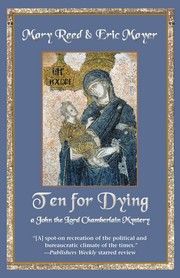


1482058 Curiosities served
An Inverted Detective Story
Previous Entry :: Next Entry
Read/Post Comments (11)
I'm not sure I would agree with the last sentence, and I am sure Mary would take umbrage, but it is good to know that I at least read mysteries like Raymond Chandler.
Coincidentally I have run across the perfect sort of book for readers like myself -- the inverted detective story. R. Austin Freeman claimed to have invented the form in his 1912 collection of short stories The Singing Bone:
"Some years ago I devised, as an experiment, an inverted detective story in two parts. The first part was a minute and detailed description of a crime, setting forth the antecedents, motives, and all attendant circumstances. The reader had seen the crime committed, knew all about the criminal, and was in possession of all the facts. It would have seemed that there was nothing left to tell, but I calculated that the reader would be so occupied with the crime that he would overlook the evidence. And so it turned out. The second part, which described the investigation of the crime, had to most readers the effect of new matter."
Freeman's In the Shadow of the Wolf , an example of such a mystery, suited me just fine. The narrative begins with a murder on a yacht at sea --what the killer imagines to be a perfect, undetectable crime. However, he has not reckoned on the crime solving skills of the medico-legal Doctor Thorndyke.
I have to say that Freeman surprised me. Doctor Thorndyke employs both Holmsian reasoning and up-to date (for the early twentieth century) forensic analysis. It is fascinating to watch him in action and that I expected. However, the crime is rooted in complex personal and pyschological relationships worthy of Georges Simenon and as the investigation unravels Thorndyke finds himself dealing with a situation where justice and morality may not precisely coincide.
Aside from giving the non-detecting reader a clear look at how the detective operates, the inverted detective story offers another advantage. My impression is that in most mysteries the circumstances and events leading up the the murder are more interesting and dramatic than the investigation. Yet it is the investigation which is front and center, while the drama of the murder is only revealed retrospectively in bits and pieces. In addition the murderer and the victim are usually strong characters. Yet we can know the deceased victim only second-hand and since the murderer cannot be revealed until the end, he or she occupies far less of the book than the character's role as instigator of the whole story actually warrants.
A weakness of the inverted mystery is that the most dramatic event -- the murder -- occurs early on, but then again, in most mysteries the murder is never shown.
I'm not sure that very many inverted mysteries have been written, or whether anyone would publish them today. I am not all that concerned about what is published today since there exists such a wealth of reading from the past. Mary has been collecting links to online mystery books which can be found at her The Maywrite Library. Perhaps there are some inverted mysteries lurking there.
Read/Post Comments (11)
Previous Entry :: Next Entry
Back to Top

